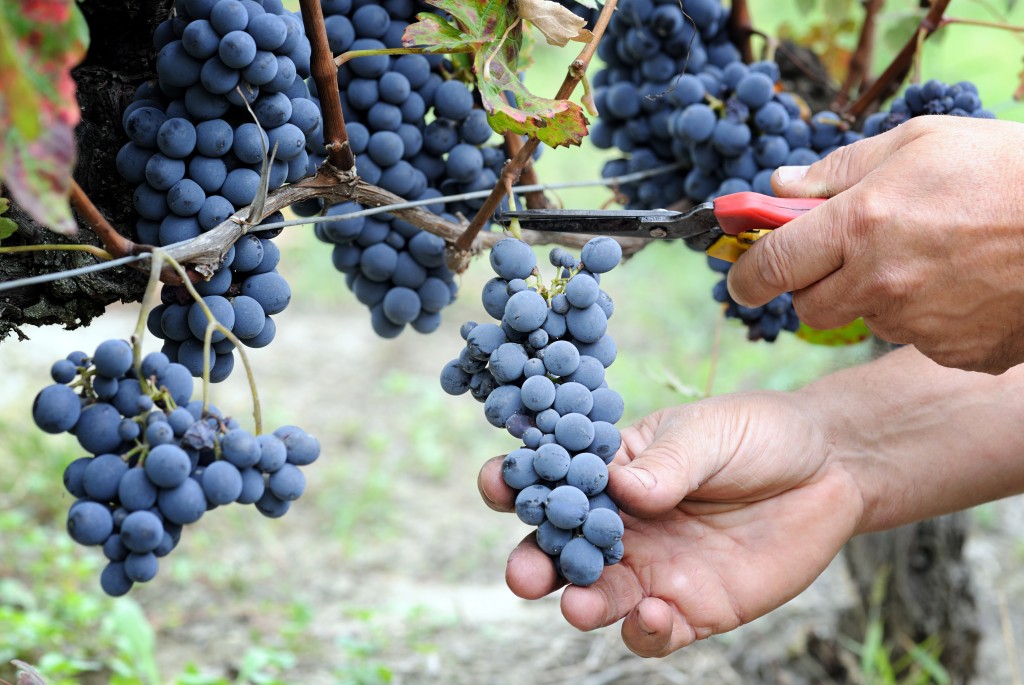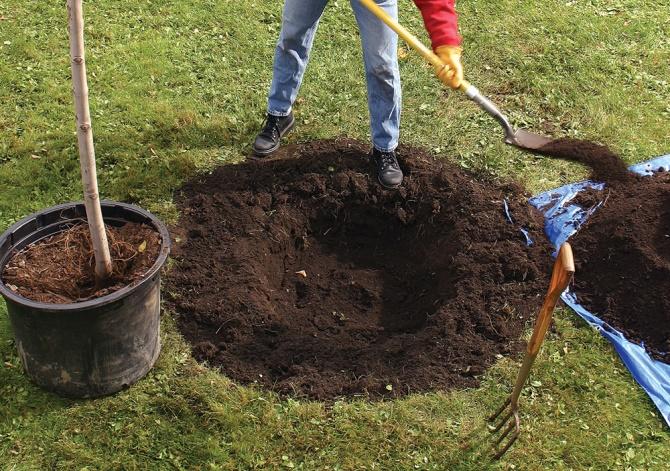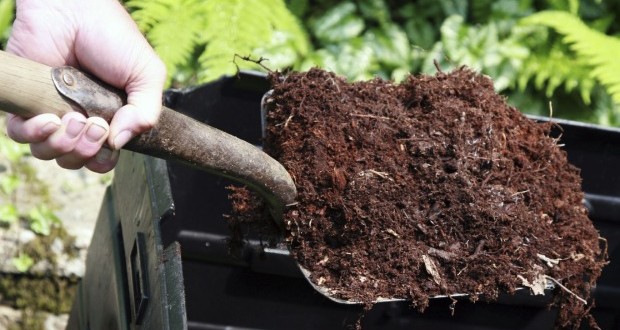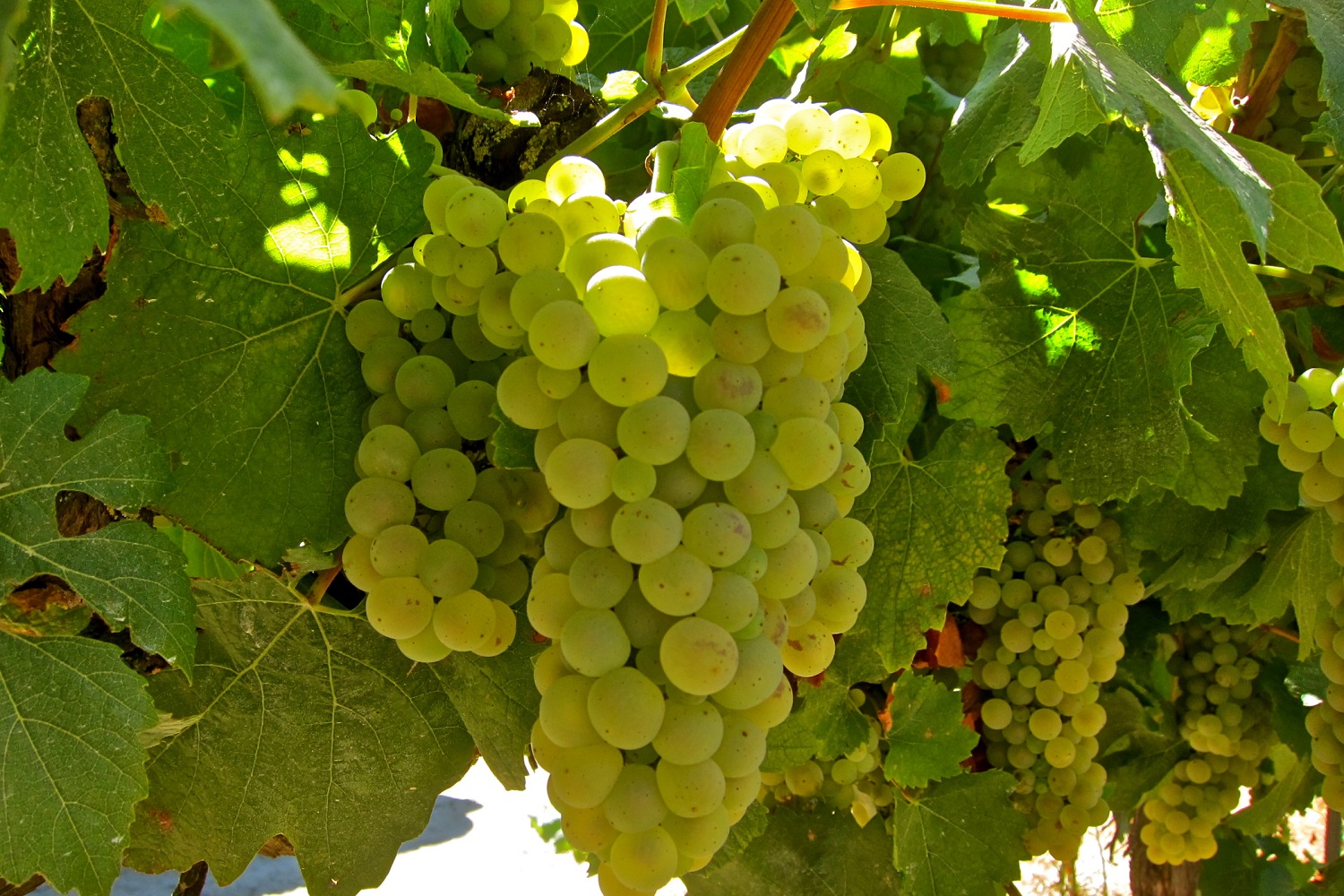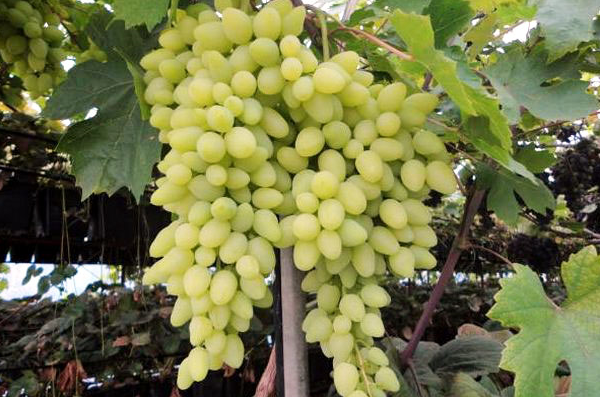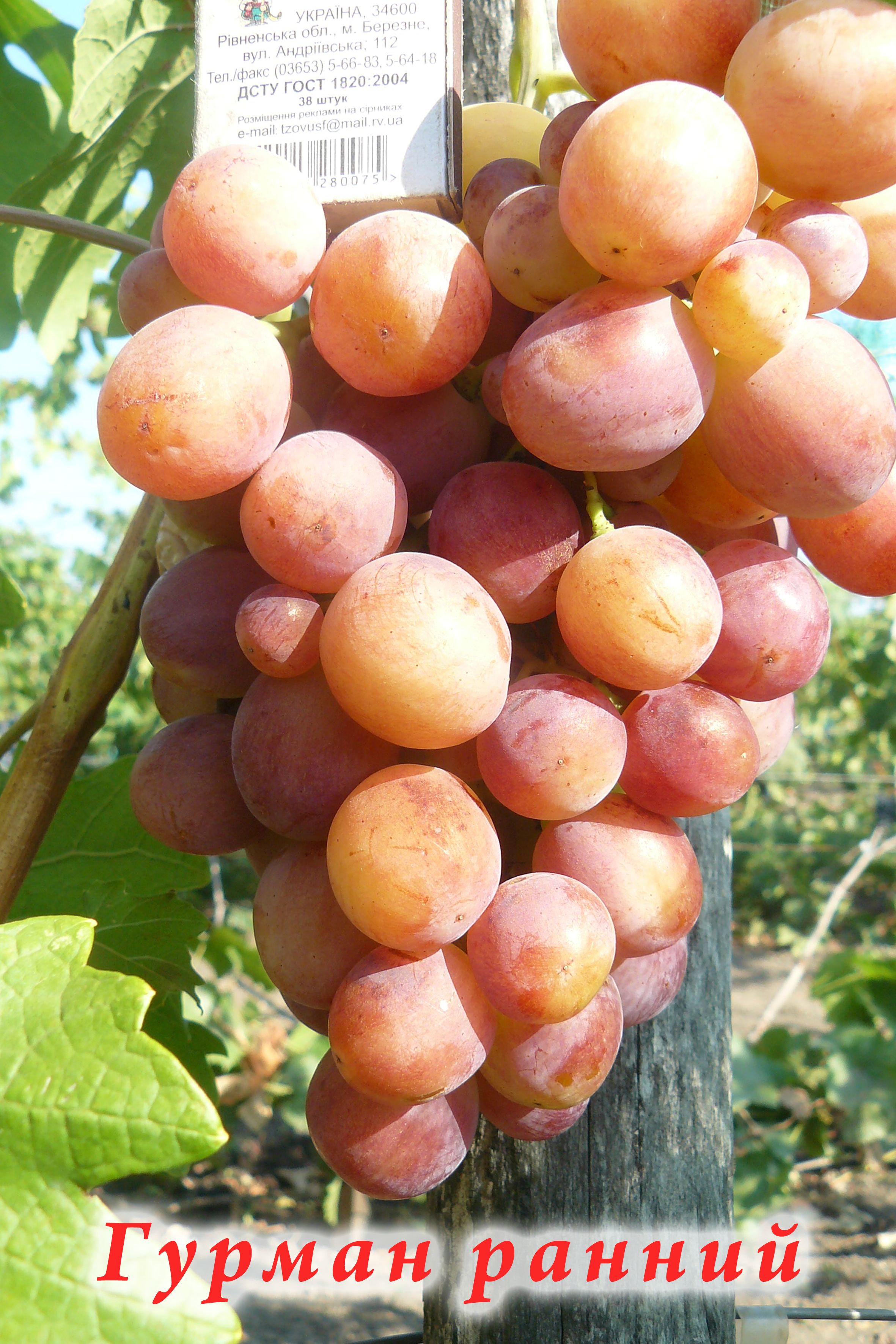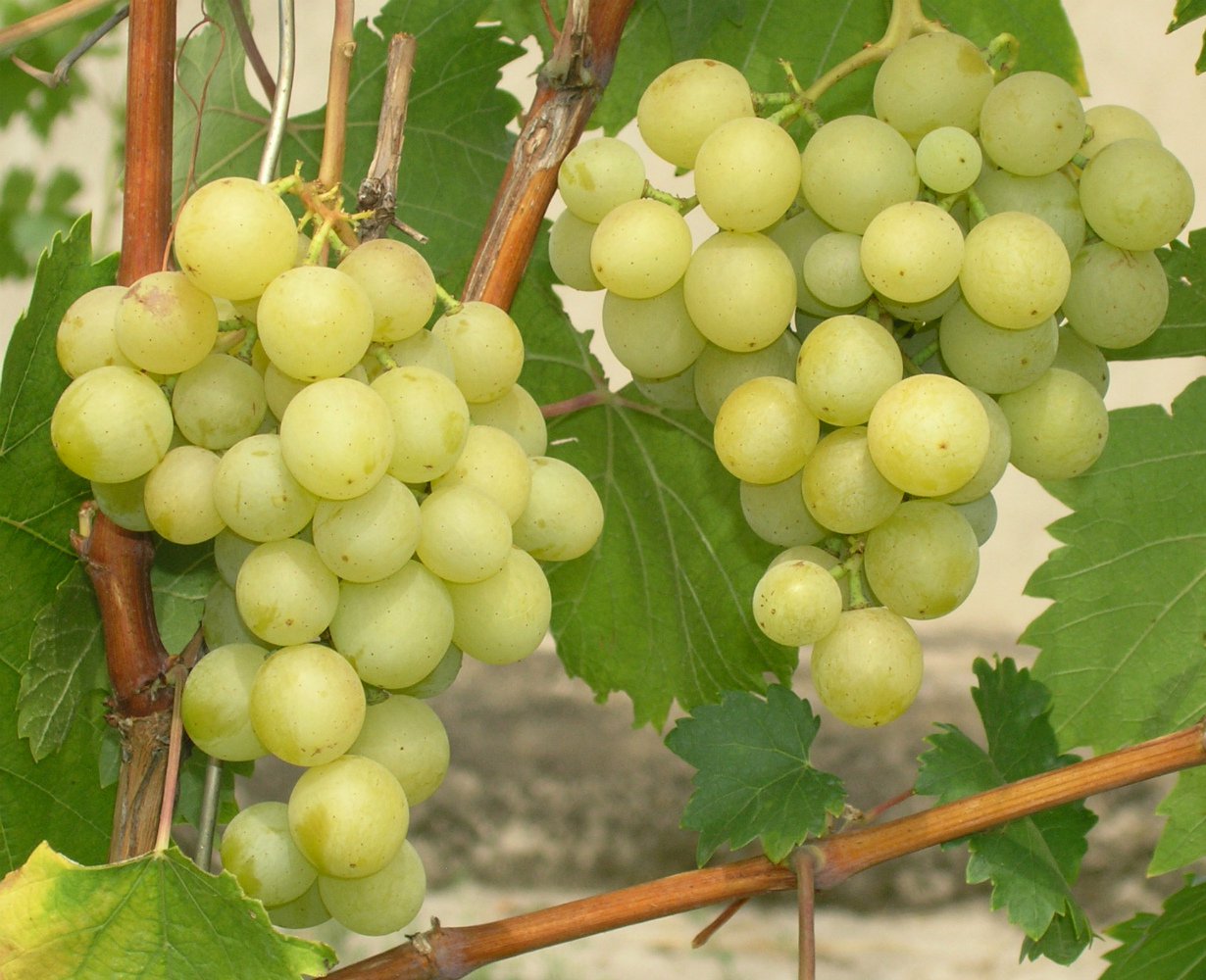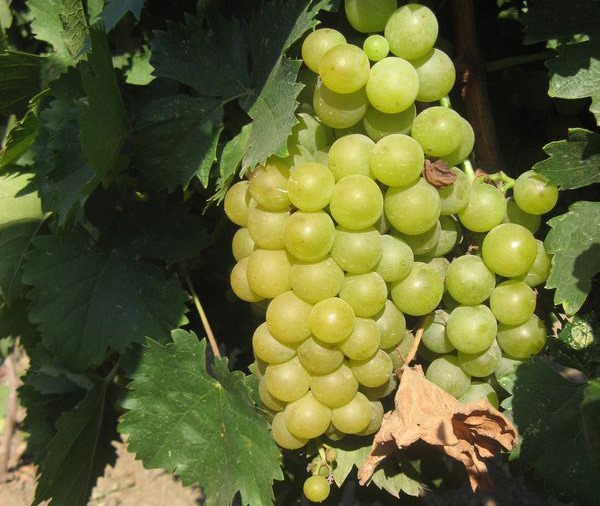Content:
Experiments of winemakers with new grape varieties have led them to create an excellent wine of extraordinary taste and aroma. The Marquette grape is exactly the variety that won the love of winegrowers in a short time of its existence and became very popular. What is it and where does it come from?
Where did it come from
A technical grape called Marquette was developed by University breeders from Minnesota, USA in 1994. To do this, they had to cross 8 different varieties, the last of which was Rava 262 with a long pedigree and a complex hybrid MN 1094. The patent for it was received quite recently in 2005. So this grape variety is quite young.
In Russia, it has begun to gain popularity over the past ten years. This hybrid is mainly used in winemaking, but its pleasant taste allows it to be used as a table. The market is suitable for producing both semi-sweet and dessert wines. Winemakers pin great hopes on it, considering it the leader among frost-resistant wine varieties.
Features of the variety
When breeding the variety, breeders focused on the taste characteristics of grapes and on making it easier for winemakers to take care of the plant, to make its shape more convenient for growing. They did it very well.
The sun freely penetrates to all vertically arranged vines, which has an excellent effect on the quality and taste of the ripening crop. Each shoot most often forms 2 brushes of the usual (like most varieties) conical or cylindrical, weighing 200-400 g.
Round berries in clusters, deep black-violet color, small size, well resist cracking. The skin is covered with a light coating, which ensures a longer storage of the grapes.
Still red wines, obtained from the Marquette grapes, give off a high% alcohol content (about 15%) and excellent quality. When tasting wines, notes of cherry, pepper, chocolate, blackberry and a moderate content of tannins (naturally occurring polyphenols) are strongly felt.
Market refers to types of mid-ripening, which occurs, depending on the region and weather conditions, in mid-August or early September. If properly kept, grapes yield 80-100 centners per hectare.
To date, the first test results have already been obtained on the content of wine from Marquette grapes in oak barrels. Experts noted an increase in the complexity of the wine and an improvement in its structure. The variety has great commercial prospects not only for the USA and Canada, but also for the countries of Northern and Eastern Europe.
Merits of Marquette
The main feature and advantage that distinguishes the Marquette variety from other technical varieties is its high frost resistance. It can withstand up to -38 ° C cold uncovered and tolerates winter temperature changes well. In this regard, the prospect of growing it not only in the southern, but also in the northern regions of Russia, as well as in the Moscow region, opens up.
The second advantage of the culture is good resistance to fungal diseases. Grapes are immune to mildew, oidium, blackleg. Phyloxera, if it affects the variety, is very rare.Preventive measures against diseases can be taken, since grapes calmly tolerate chemicals.
Judging by some positive reviews of gardeners who already grow the Marquette variety, grapes are unpretentious and rarely affected by diseases. Moreover, the situation does not get out of control even when there may be sprouts of sick grapes of other varieties nearby. But only if preventive spring treatment with fungicides was carried out.
Disadvantages of the variety
Despite the fact that the variety can withstand harsh winters, spring frosts at -3 ° C are detrimental to young shoots. They also cannot stand cold cereal rain. The vertical shape of the bush, the early appearance of the buds - everything affects the variety unfavorably during short-term frosts.
Agricultural technology of cultivation
The most important thing is to choose a suitable place on the site for growing the crop.
According to the description of the grapes, it requires a lot of light and heat, so the site for its planting is chosen open and protected from spring frosts. Preference is given to the southern part of the garden or summer cottage, preferably along a fence or other structure.
The best soils for grapes are sandy and loamy. When planting, attention is paid to the depth of the groundwater, because the roots must be protected from getting wet. The depth must be at least 2.5 meters.
If the depth of the groundwater is less than 2.5 m, then you can plant Marquette grape bushes in high beds. The planting hole is dug to a depth of 70-80 cm. If the soil structure is more dense (clayey) than necessary for this variety, a drainage layer of pebbles or broken bricks is arranged at the bottom of the hole.
The soil is poured into the pit enriched, after having previously mixed the soil dug from it with humus, or with a special mixture purchased in the store. A grape seedling is placed in a hole and the root is completely covered with earth, leaving the root part of the plant above the surface. Compact the soil around the trunk and watered abundantly. For the stability of the shoots, a peg is placed near the garden bed and tied to it.
Considering that young shoots are sensitive to frost in spring, it is advisable to cover the grapes with a film or other non-woven material. It is rather difficult to perform such a technical moment, therefore summer residents should calculate their capabilities when purchasing this grape variety. In order to prevent damage to the foliage by phylloxera, in the spring it is possible to carry out the treatment with the necessary fungicides.
The rest of the vineyard with Marquette planting is looked after in the same way as for other grape varieties. Water regularly, excluding the flowering period, to avoid color loss. They free trenches or holes from weeds, loosen the bushes in a timely manner, fertilize them with organic matter in autumn or spring.
In addition, according to the characteristics of the variety, in order to obtain a decent harvest, the bushes are regularly fed with fertilizers with a high content of phosphorus and potassium. It is recommended to put compost into the trenches every 2 years in the fall.
The structure of the bush provides access to all branches for its formation. Usually no special trimming is required for it. It is performed only in case of thickening, or to get rid of dried or injured parts.
Some secrets of winemaking
Wine experts who have already received excellent wine from the Marquette variety share some secrets and recommend:
- To get the wine not too cloying, but rich, grapes should be combined with less sweet varieties.
- To give the wine the necessary concentration and better structure, it must be aged in oak barrels.
- In the process of making wine, the seeds are not destroyed under the pressure of the berries, so as not to increase the bitterness and not to worsen the taste of the wine.
- Varietal seedlings for growing are purchased only from licensed suppliers, otherwise it is not known what to grow.
In addition, it should be borne in mind that the strength of a grape drink directly depends on its sugar content.
American experts call the Marquette grape the pioneer of completely new hybrid varieties with high resistance to most diseases and low temperatures. They evaluate the quality and richness of wine at the level of European wines. Who knows, maybe thanks to the Marquette variety, viticulture will flourish in the northern climatic zones.
